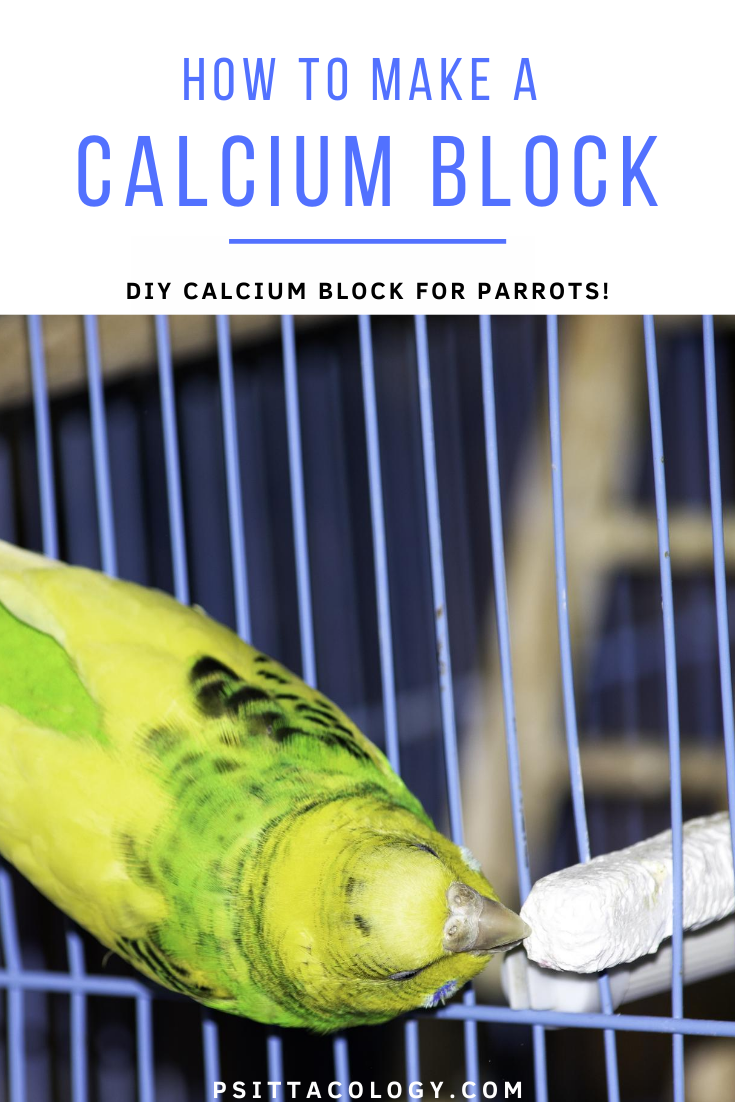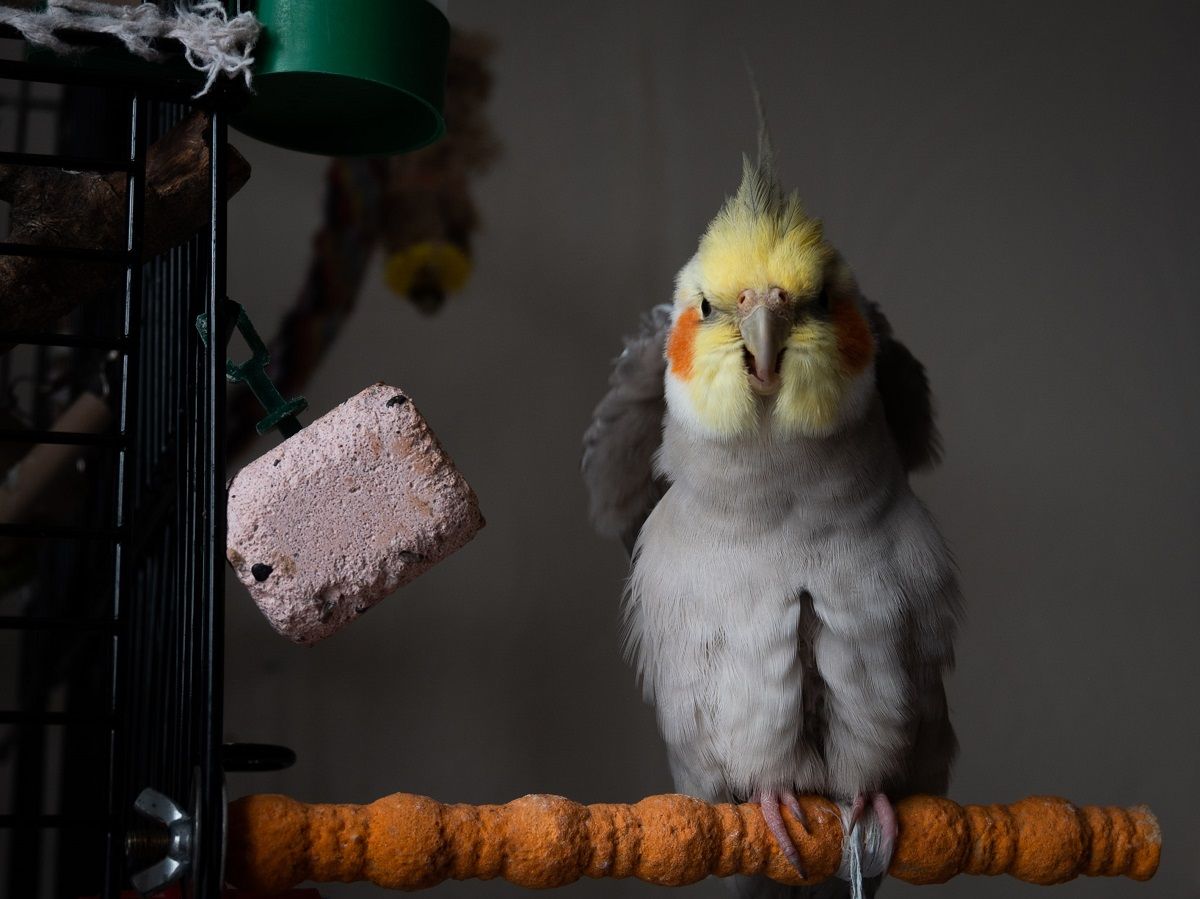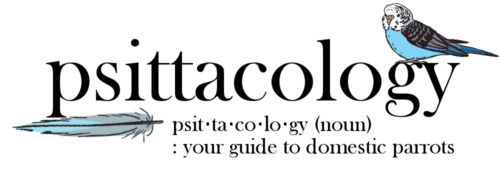If you like to DIY parrot supplies, it’s pretty easy to make your own calcium blocks. There are various ways to do so and there’s a wide range of products you can use to create a block that’s high in calcium and trace nutrients/vitamins.
Keep reading to find out everything you need to know to DIY calcium blocks for your parrots!
This post contains affiliate links. If you make a purchase, a small percentage will go directly to Psittacology at no additional cost to you. Thank you for supporting Psittacology!
Do parrots need a calcium block?
Calcium is very important for a parrot’s normal functioning. A lack of this element can cause a range of issues, from abnormal feather development to serious seizures.
Although a proper parrot diet consisting of high-quality pellet food should contain plenty of calcium, I still personally like to supply a calcium block as well. If my birds feel the need, they can choose to nibble at them. If not, then they can leave it alone. I also like to supply a cuttlebone so that my parrots can choose what they prefer.
If you breed your birds or have a female that tends to lay eggs, calcium becomes extra important. Egg laying really depletes a parrot’s supplies!
Tip: If you’d like to know more about calcium blocks and whether your parrot needs one or not, head over to the full article on calcium blocks.

DIY calcium block ingredients
There are loads of different things that can go into a calcium block. I like to keep it on the simple side when making mine, though! The following work well together and create a calcium-packed end result:
- Egg shells, ground to a fine powder in a blender.
- Cuttlebone, ground to a fine powder in a blender.
- Oyster shells, ground to a fine powder in a blender.
- Plaster of Paris*.
- Water.
*It sounds pretty odd to offer this to a bird, but it’s actually safe and non-toxic! It’s the perfect material to supply calcium and allows you to pour your calcium block into a mold to shape it.
You can use equal amounts of eggshell, cuttlebone and oyster shell. Add double the weight in plaster of Paris and half of the weight in water. To illustrate that with an example:
- 1/2 cup (~50 grams) each of powdered egg shells + cuttlebone + oyster shells = 1 1/2 cup (~150 grams).
- Add 1 1/2 cup (~150 grams) plaster of Paris.
- Mix in 3/4 cup (~75 ml) of water.
Note: Obviously it’s going to be cheaper to buy your own calcium blocks compared to making them yourself. However, I do like making my own, just because this way I know exactly what’s in there. The ingredients last forever so you can make more whenever you want.

Method
Once you’ve mixed your ingredients, it’s time to pour them. You can use any kind of mold you prefer: muffin cups, ice cube molds, and other molds used for baking all work perfectly well.
Mix well and pour the mixture into the mold. To really make using the end result easier, now fold a piece of wire in half and stick it into the liquid calcium mixture. Basically, two pieces of wire should be sticking out. That way, when the block has hardened, you can easily attach it to the bars of your parrot’s cage.
Once the mixture has been poured and the wire has been inserted, you can forget about your calcium blocks for a day or so while they harden. After this, you can carefully take the blocks out of their molds and offer the end result to your feathered testing panel. They might not be interested right now, but when they feel the need to ingest some calcium, they’ll go for it.
Tip: add some color!
To conclude, here’s a fun tip for your calcium blocks. Does your parrot respond well to colors? Health stores should carry a range of powders that are bird-safe and can be used to both enrich and color your calcium blocks. Additionally, a good bunch of the spices you’ll probably already have at home are very colorful!
All of these contain different micro-nutrients and are a great alternative to food dyes. Because they’re dried powders, they won’t make your calcium blocks expire significantly faster.
- Green: Wheatgrass, spirulina, moringa, matcha
- Purple: Beet, açai
- Yellow: Turmeric, saffron
- Orange: Paprika, freeze-dried carrot
All of this not funky enough for you? You can also mix in some other bird-safe dried additions like rose petals or hibiscus, which you can find in tea shops.
If you have any more questions about making calcium blocks for parrots or if you want to share your own DIY experiences, don’t hesitate to leave a comment below!

Can we use dolomite,or calcium carbonate powder,garden lime.I am not sure about plaster ,
Yes, you can actually buy powdered calcium in a jar especially for birds (Avian Calcium). Calcium carbonate is also a great choice.